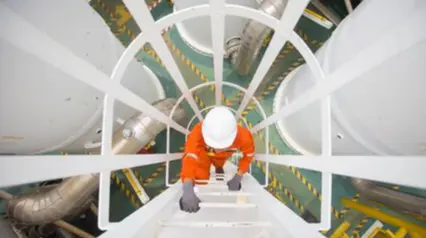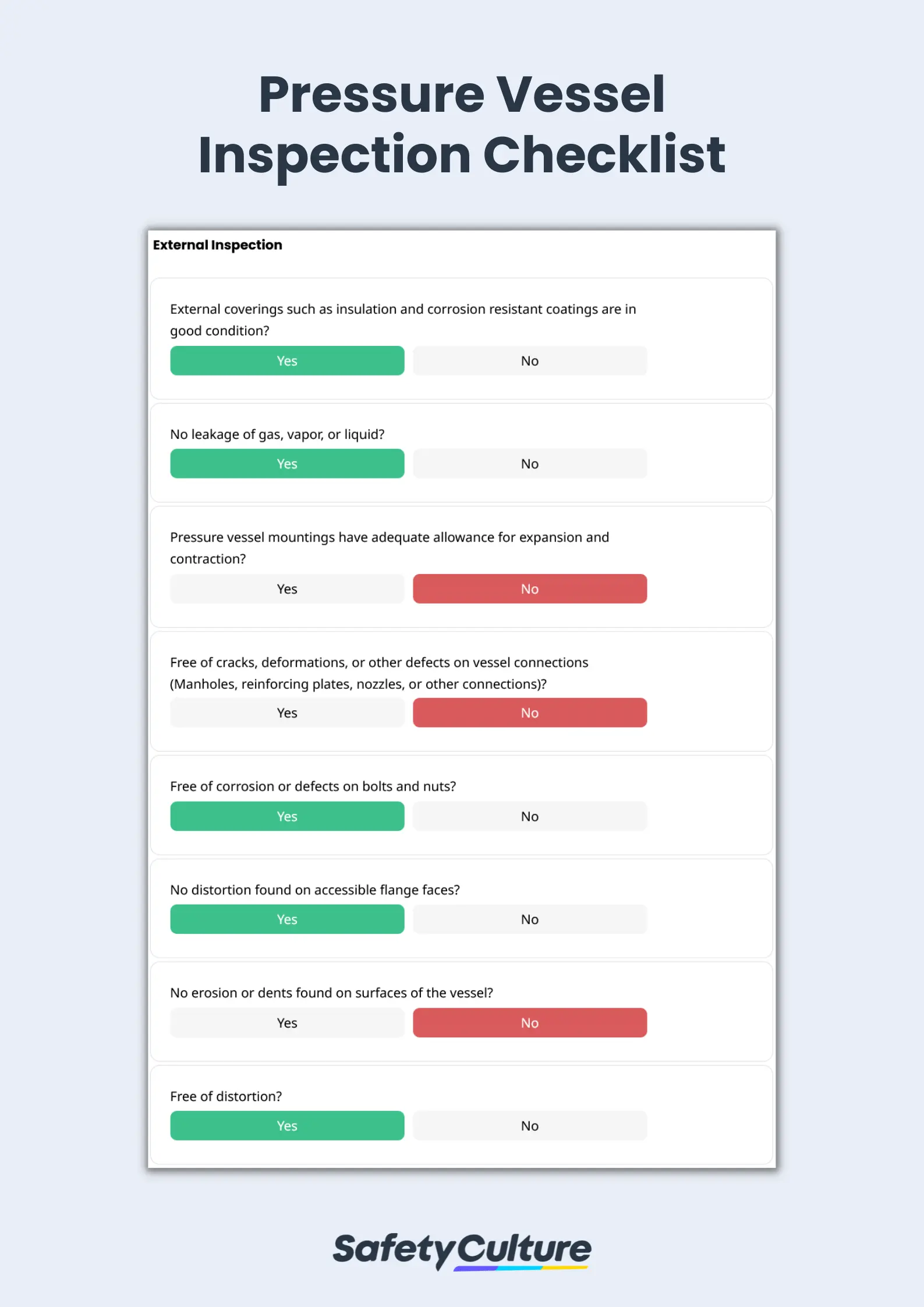What is a Pressure Vessel Inspection?
A pressure vessel inspection, also known as a boiler inspection, is a regular safety check to ensure vessels are in proper working condition. It involves visually inspecting the vessels to confirm they can safely hold liquids or gases under pressure, preventing failures that could lead to costly property damage, harm to business reputation, or loss of life.
Why Use Pressure Vessel Inspection Checklists?
Boilers and pressure vessels vary by shape, construction materials, working pressure, vessel threads, safety features, and maintenance features. Engineers, safety officers, or boiler inspectors use pressure vessel inspection checklists to help maintain the good working condition of pressure vessels and their safety accessories which keep liquid and gas pressure in check. Boilers are common devices for industrial heating and humidification applications, and pressure vessels are used to hold liquids, vapors, or gases at high pressures.
What to Include in a Pressure Vessel Inspection Checklist?
Below are the general items to check during pressure vessel inspections:
External Inspection
- Coverings
- Leakage
- Vessel mountings
- Check for defects, cracks, or deformations
- Corrosions
Internal Inspection
- Threads and threaded connections
- Openings
- Special closures
- Free from cracks, deterioration, and corrosion
Safety Devices
- Proper seal
- Intact bolts
- Check for rust, corrosion, and damage
- Rupture disks
Piping Systems
- Provision of expansion and support
- Free from leakage, corrosion, erosion, cracking
How Often Should Pressure Vessels be Inspected?
Generally, pressure vessels should be inspected at least once every two years and tested at least once every five years. Visual examinations of pressure vessels, or storage tanks/vessels that operate at pressures above 15 psig (pound-force per square inch gauge), should also be conducted after installation, before operation, and during maintenance to detect potential cracks and ensure boiler and pressure vessel safety. This also applies to high-pressure vessels that will require regular inspections and monitoring.
Pressure Vessel Inspection Requirements
Inspection requirements for pressure vessels depend on country-specific regulations such as the Pressure Systems Safety Regulations of 2000 (PSSR) in the UK, regional guidelines such as the Pressure Equipment Directive of 2014 (PED) from the European Commission, and applicable industry standards such as the Boiler and Pressure Vessel Code of the American Society of Mechanical Engineers (ASME).
3 Main Causes of Pressure Vessel Failure
There are several causes of pressure vessel failure that can have dangerous consequences if not caught early and immediately corrected during routine inspections. Consider these common reasons why pressure vessels become unfit for use and watch out for them during routine inspections.
1. Hardware issues
Error in vessel design, plate material used, construction, or installation can cause cracks and erosion on boilers and pressure vessels that could lead to leakage or rupture. Compliance with industry standards for the manufacture of boiler pressure vessel valves can help prevent failures and other hardware issues.
2. Errors in repair
Welding, coating, and other methods of pressure vessel repair that do not conform with standards may not properly address issues and render the vessel unsafe for use. Periodic inspections should be conducted by engineers or boiler inspectors to proactively determine if boilers, pressure vessels, and safety devices are still in good working condition or already in need of repair or replacement.
3. Lack of monitoring
Prolonged use of pressure vessels without periodic maintenance or routine inspections can lead to catastrophic accidents. Whether inspections are done annually or every 4 hours, they can help keep the vessels at optimal condition and prevent unforeseen accidents if they are conducted by competent personnel.
Wrong material used and lack of internal audits contributed to the rupture of a pressure vessel in 2009 that caused injury, damage to nearby businesses, and loss of life in the state of Illinois.


